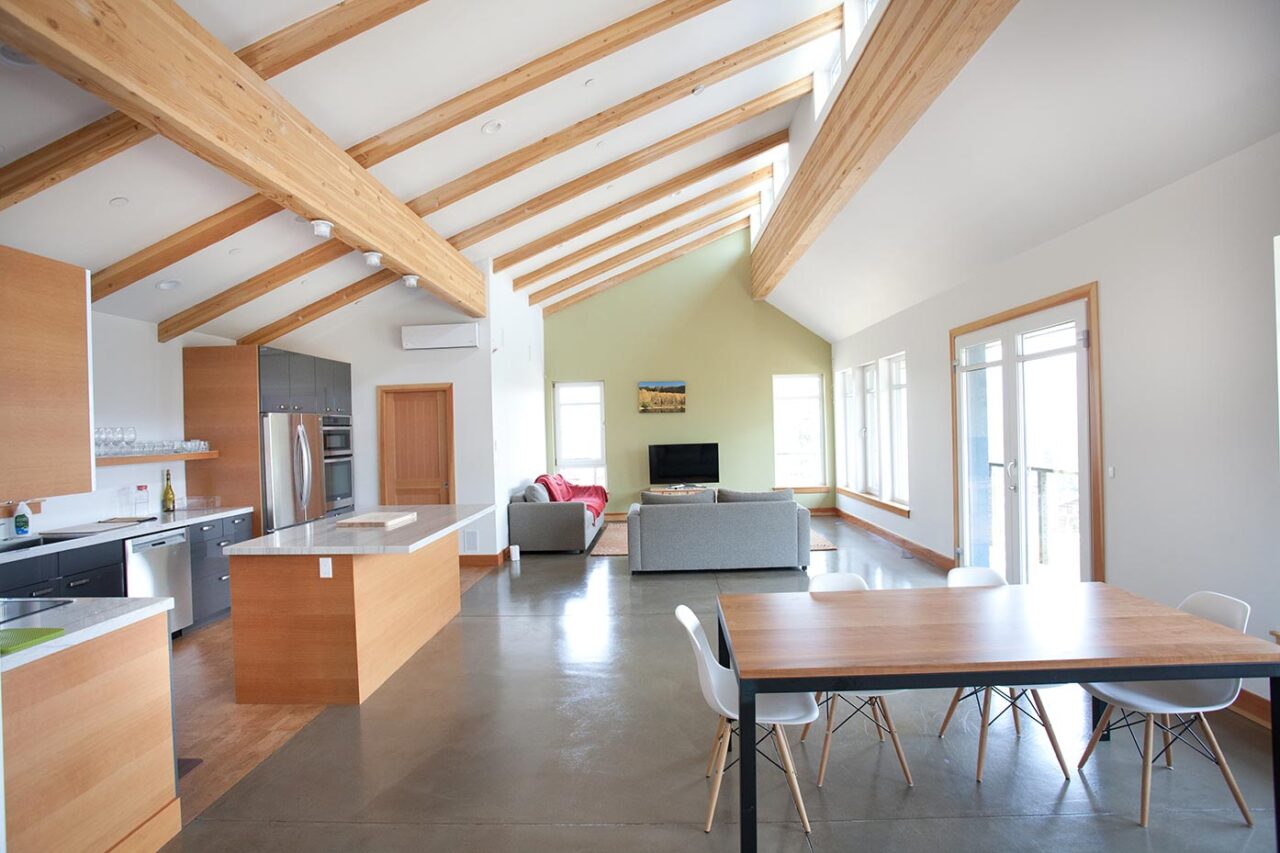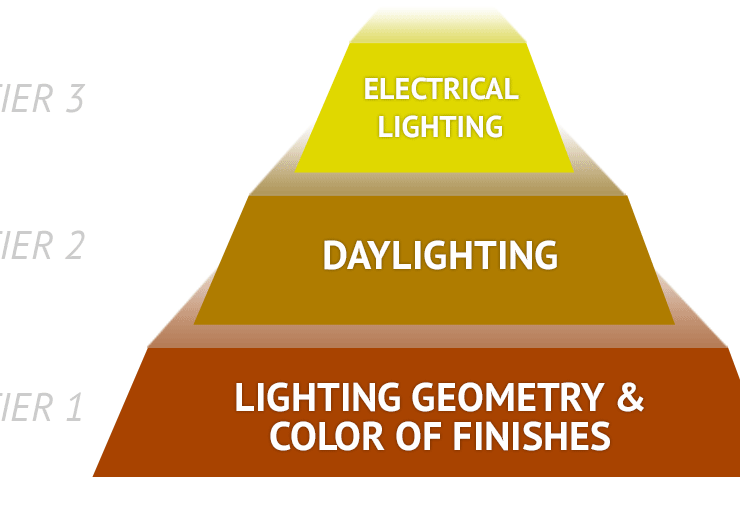A quality lighting design takes into account the aesthetic, biological, and task performance requirements of the users.
The color of finish surfaces plays a large role in the lighting environment, with light toned surfaces reflecting more light and colored surfaces reflecting a limited spectrum of light. The axiom “quality over quantity” is essential when it comes to lighting.

Daylighting can be used for both functional and dramatic purposes in architecture. Daylight is most effective when it is distributed uniformly throughout the space with no direct sunlight or glare. A good daylighting design always allows the electric lights to be turned off when sufficient natural light is present. Daylighting works with the natural circadian rhythms of the body and has been proven to enhance productivity in classrooms, work spaces, and retail applications. Daylighting must be integrated into a project in the very beginning of the design process to optimize the benefits.
Electric lighting can be supplied in many varieties these days. The incandescent light bulb has not changed much in the over 130 years since its invention by Thomas Edison. The efficacy of a light source is the ratio of light output versus energy input—one of its most important characteristics. Incandescent lights have an output ratio of 7% light and 93% heat for each watt of input energy. Fluorescent fixtures on the other hand have a ratio of 22% light to 78% heat and other types of lighting, including LED’s have even better light to heat ratios. It is important to choose the most effective type of lighting and lighting controls to meet the architectural requirements and to complement the daylighting system.



